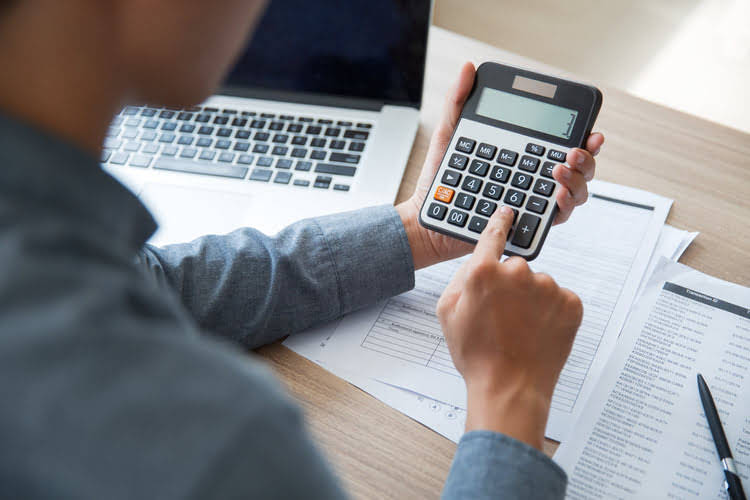Once the company completes its IPO, the general public can trade its shares on the stock exchange. Then, the conversion price can be calculated by dividing the par value of the convertible preferred stock by the number of common shares that could be received. If an investor paid par ($100) today for a typical straight preferred, such an investment would give a current yield of just over six percent. Also, consider how important things like voting rights and payment priority are to you. If you want to be actively involved in shaping the company’s policy or choosing who sits on the board, then you’d most likely want to choose common stock. But remember that investing in common stock means you’d be paid last if the company goes under.
- Treasury stocks are repurchased by the company at the market share prices.
- Other companies designate certain votes for Class A only, like filling the board of directors or changing the strategic direction of the company.
- Until the company holds treasury stocks, they are reported on the financial statements of the company like other equity components.
- Because of their stable dividends and lower volatility, preferred stocks are often favored by institutional investors pursuing a predictable income stream.
- The existence of a fiduciary duty does not prevent the rise of potential conflicts of interest.
If you’re near retirement and hoping to gain an income, dividends from preferred stocks can give you a reliable source of cash but not a lot of growth potential. On the other hand, if you have a lot of years left to invest in the market, common stocks can bring higher returns. Additionally, if a company goes bankrupt or liquidates its assets, preferred shareholders get paid out before holders of common shares. Shareholders in a company have the right to vote on important decisions regarding the company’s management. For example, shareholders vote on the members of the board of directors. Usually, common stock allows the shareholder to vote, but preferred stock often does not confer voting rights.
What is Share Capital?
Common stock is what most people think of when they talk about the stock market. Common, or ordinary, shareholders have voting rights and participate in major company decisions. Although companies at times pay dividends on common shares, they are not required to pay them. For common stock, when a company goes bankrupt, the common stockholders do not receive their share of the assets until after creditors, bondholders, and preferred shareholders.
- It is recorded as a credit under shareholders’ equity and refers to the money an investor pays above the par value price of a stock.
- Each shareholder gets the ownership rights in the proportion of their purchased shares.
- However, they generally include a guaranteed dividend each year that must be paid before any dividends can be distributed to common shareholders.
- These stocks are also normally less liquid than common stocks, meaning they are traded less frequently, making them less suitable for retail investors looking for short-term gains.
- Preferred shares are more common in private or pre-public companies, where it is useful to distinguish between the control of and the economic interest in the company.
Once the IPO is complete, the stock becomes available for purchase by the general public on the secondary market. Common stocks are issued through an initial public offering (IPO) for the first time. Then, these shares can be issued directly through a rights issue as well.
Types of Share Classes
These markets all trade financial securities, so they are all capital markets. The stock market is a very significant portion of the total volume of capital market trades. However, in the case of liquidation, common stockholders are the lowest level of priority legally. Common stocks offer ownership status, voting rights, and monetary value to shareholders.
How to Invest in Preferred Stock
However, disposing of treasury stocks is not an obligation for the company but an option. Commons stocks also offer financial stability by helping a company in managing its leverage and gearing ratios. Common stocks are the most prominent part of the total equity of the company.
In practice, a company issues common stocks to raise capital from the market. A company’s common stocks have a base value (issue price) and a premium value. The base or issue price of common stock is fixed while its market share price changes. Publicly listed companies hold their market capitalization through common stocks.
During its IPO, a firm is entitled to set any price for its stock that it sees fit. Meanwhile, investors may elect to pay any amount above this declared par value of a share price, which generates the APIC. Preference shares, also known as preferred stock, are shares of a company’s stock that…
For example, if a company has 100 million shares outstanding, owning 1 million shares gives you 1% ownership of the company. If the company does well over time, the value of your shares goes up. We do not manage client funds or hold custody of assets, we help users connect with relevant financial advisors. Therefore, the convertible value of $200mm is selected, as it is the greater of the two compared to the $100 million received from the preferred value. Suppose a private investment firm has decided to invest $100 million for a 20% ownership stake in the target company. You’ll learn why mastering the “T-Factor” is key to raising venture capital.
Is Preferred or Common Stock a Better Investment?
Additional paid-in capital, as the name implies, includes only the amount paid in excess of the par value of stock issued during a company’s IPO. Additional paid-in capital (APIC) is an accounting term referring to money an investor pays above and beyond the par value price of a stock. Non-voting shares are shares that do not using xero files to manage your documents grant their holder the right to vote on company matters. Contributed Surplus is an accounting item that’s created when a company issues shares above their par value or issues shares with no par value. If a company raised $1 million from shares that had a par value of $100,000 it would have a contributed surplus of $900,000.
Capital Market vs. Stock Market: An Overview
Preferential tax treatment of dividend income (as opposed to interest income) may, in many cases, result in a greater after-tax return than might be achieved with bonds. In that sense, preferred shares can offer some predictability to the investors who own them. When it’s time for dividends to be paid out, investors who own preferred stock are first in line, ahead of common stock shareholders. Preferred shares, also called preference shares, do not entail the same kinds of ownership rights as common shares. However, they generally include a guaranteed dividend each year that must be paid before any dividends can be distributed to common shareholders. In short, though preferred shareholders have fewer rights, they do have a higher claim on company assets.
The “preferred” designation refers to the security’s seniority before common shareholders. For common stock, paid-in capital consists of a stock’s par value and APIC, the latter of which may provide a substantial portion of a company’s equity capital, before retained earnings begin to accumulate. This capital provides a layer of defense against potential losses, in the event that retained earnings begin to show a deficit.
Most commonly a company repurchases its shares when it wants to control its share prices. Along with it, the company would be able to control other key metrics like EPS, DPS, Gearing ratio, and so on. From the company’s perspective, equity offers easier access to the capital market.
Preferred stock
The stock market determines the real value of a stock, which shifts continuously as shares are bought and sold throughout the trading day. Thus, investors make money on the changing value of a stock over time, based on company performance and investor sentiment. One key thing to consider when choosing preferred stock is the dividend. Compare the dividends you’ll receive relative to the share price to determine if the yield offers an attractive return. Growth stocks belong to companies expected to experience increasing earnings, which raises their share value. Meanwhile, value stocks are priced lower relative to their fundamentals and often pay dividends, unlike growth stocks.




